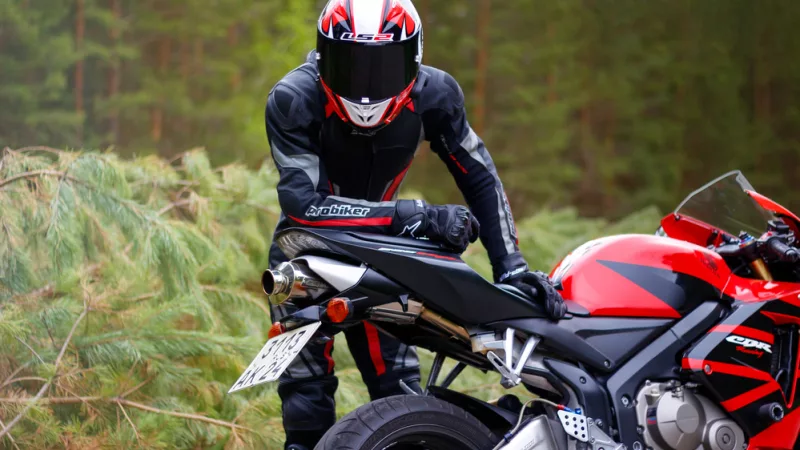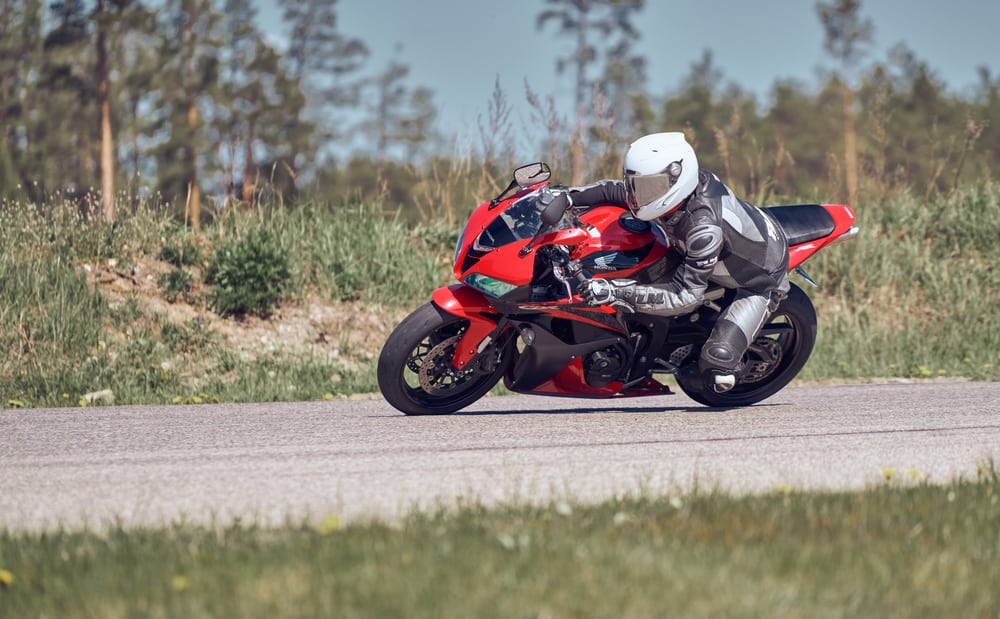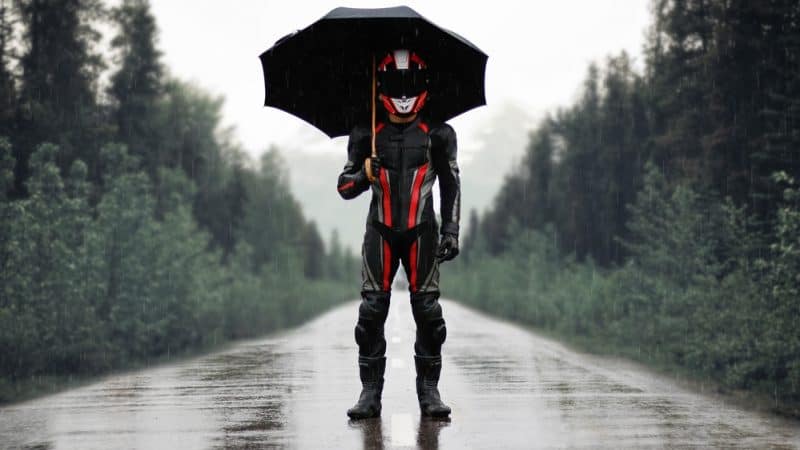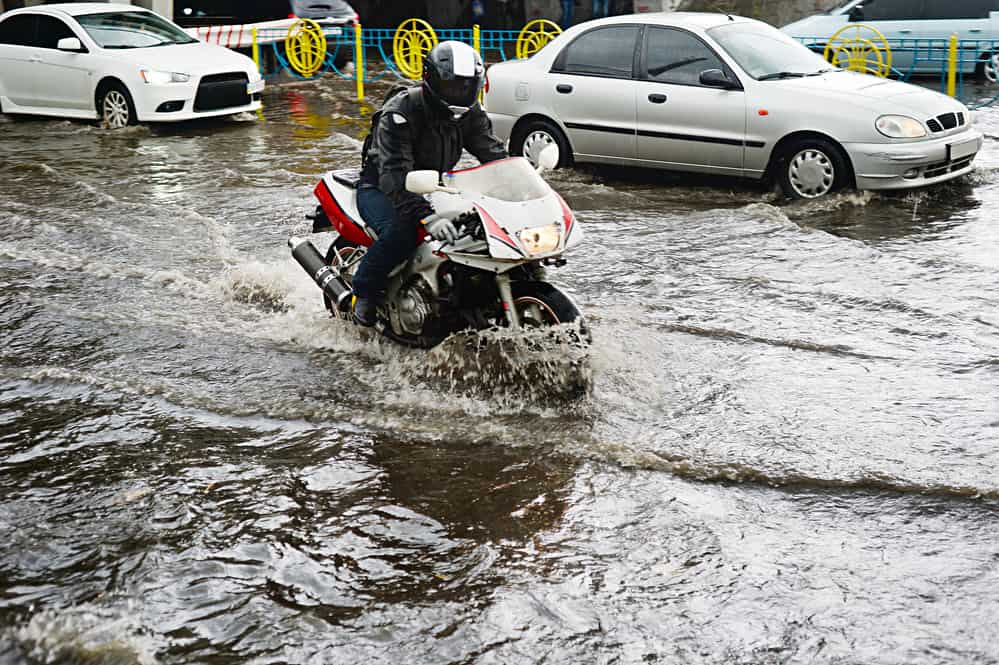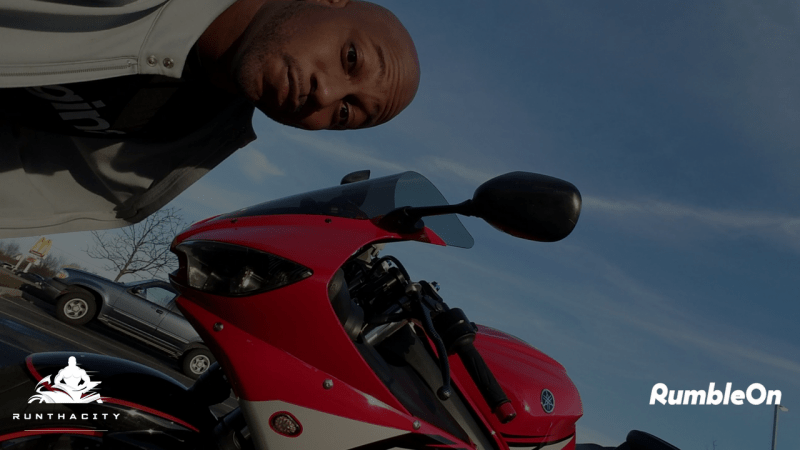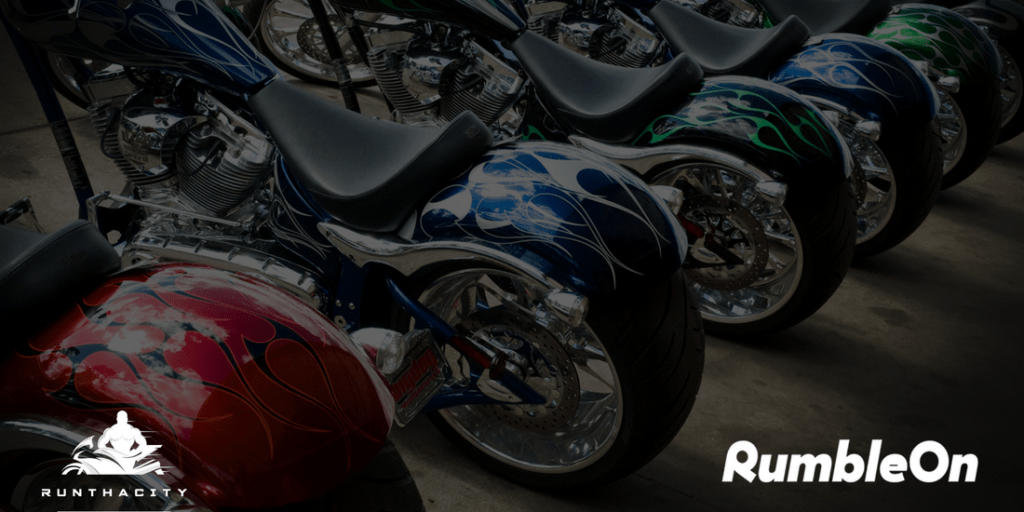The Sena 3S Bluetooth Headset can best be described as simple but good, a tiny, light headset that weighs about the same as a few coins. Not only is it light, but it is also very easy to use with just two buttons used to control the headset. The headset is available in two versions – the 3S-B with a boom mic or the 3S-W with a Lilliputian mic.
The Sena 3S Motorcycle Bluetooth Headset
The Sena 3S Bluetooth Headset is the next generation of the Nexx SXCOM, the first self-contained motorcycle system which was a joint venture of Sena and Nexx. The headset was introduced at the 2014 AIMExpo Show in Orlando, Florida. The 3S is smaller and lighter than the SX-COM, containing a pair of speakers and a microphone. It is self-contained and uses a Bluetooth stereo headset and intercom. For a cheap motorcycle Bluetooth headset, the 3S has everything you need and nothing you don’t.

Using the Sena 3S
Early motorcycle headsets were extremely difficult to use. Some were so complicated, you needed to tape instructions to the gas tank to remember what sequence of buttons to press. They had very limited range and it was sometimes impossible to talk to passengers through the headsets. Included with the headset is a four-page “Quick Start” booklet or you can download a .pdf form of the leaflet from Sena here. The headset powers up using a quick press of the + and – buttons. Even better, these two buttons control the entire system, whether you want to change the volume, use your phone or pair a GPS or MP3.




SMH3 Sound Quality
The speakers on the Sena 3S are a little bulky, but not any worse than other types of motorcycle headsets. The sound is good and can be heard easily over the sound of the bike. The microphones are sensitive so the mouthpiece does not need to be pressed to your mouth like other systems. In fact, if the mic is too close and the volume to high, the speakers are overwhelmed. Music quality is good as well and you can distinguish bass sounds easily. For a cheap motorcycle Bluetooth headset, the sound is outstanding, however.
Should I Choose the Boom or Wired Version?
Whether to choose the boom or wired version of the 3S depends on several factors. The boom version is designed for open-face helmets due to the location of the operating buttons. The + and – buttons are located along the top end of the microphone and, although you can reach under the face shield to press them, this can be difficult. If you are also wearing thick gloves or have a large face shield, accessing the buttons on the boom mic is not easy. However, the wired version doesn’t work as well in full-face helmets, especially if there is a large chin vent. In those cases, wind noise can affect microphone performance.
Sena 3S Features
- Two-buttons on the control pad on the mic or the external mount control all features.
- Bluetooth intercom up to 200 meters (220 yards) in open terrain.
- Bluetooth pairing for mobile phones (can connect dual mobile phones).
- Voice prompts.
- Bluetooth stereo headset with A2DP.
- Bluetooth music playback control by AVRCP: play, pause, track forward and track back.
- Integrated audio booster.
- Up to 8 hours talk time, 7 days stand-by time.
- Individual volume control for each audio source.
- Firmware upgradeable.
Two-year warranty.
In the Box
- Bluetooth Built-in Speaker-microphone Unit
- USB Power & Data Cable (Micro USB Type)
- Microphone Sponges
- Male Velcro Pads for Speakers
- Female Velcro Pads for Speakers
Sena 3S Specifications
- Talk time: 8 hours.
- Stand-by time: 7 days.
- Working distance (intercom): up to 200 meters (220 yards) in open terrain.
- Operating temperature: -10˚C ~ 55˚C (14°F ~ 131°F).
- Dimensions:
- Speaker: 39.9 mm x 39.9 mm x 11.3 mm ( 1.6 in x 1.6 in x 0.4 in )
- Boom microphone length: 180.0 mm ( 7.1 in )
- Weight:
Headset: 59 g ( 2.08 oz. )
Bluetooth:- Profile: Headset Profile, Hands-Free Profile (HFP), Advanced Audio Distribution Profile (A2DP), Audio Video. Remote Control Profile (AVRCP).
- Bluetooth 3.0
- Audio:
- Built-in SBC Codec
- Noise cancellation
- Wind noise reduction
- Wide volume control
- Sample rate: 48kHz (DAC)
- Battery:
- Charging time: 2.5 hours
- Type: Lithium polymer battery
Sena Downloads
As a cheap motorcycle Bluetooth headset, the Sena 3S appeals to several types of riders. It is perfect for those who want to try a Bluetooth intercom set or those who need an easy-to-use system that isn’t expensive. To learn more about the Sena 3S Motorcycle Bluetooth headset and other accessories for your bike, visit check out my YouTube channel.
You Might also like
-
More Than Just a Number: Evaluating Motorcycle Performance Beyond Top Speed
In the world of motorcycles, the allure of top speed is undeniable. Images of sleek machines blurring across racetracks and boasting impressive numbers often dominate the conversation. However, for many riders, true performance goes beyond simply hitting the highest speedometer reading. Just like a good book isn’t judged solely by its length, a motorcycle’s true capabilities extend far beyond a single metric.
Key Takeaways
- Top speed isn’t the only measure of motorcycle performance. Consider factors like acceleration, handling, braking performance, and power-to-weight ratio to find the perfect bike for your needs.
- Different riding styles prioritize different performance aspects: acceleration for city riding, handling for navigation, braking for safety, and power-to-weight ratio for sport riding.
- Choose a motorcycle that aligns with your individual riding style and preferences for the most enjoyable and fulfilling experience.
Comparison Table: Conventional vs. Unconventional Motorcycle Performance Measures
Feature Conventional Unconventional Focus Top Speed Acceleration, Handling, Braking, Power-to-Weight Ratio Relevance Limited More comprehensive picture, caters to various riding styles Examples MPH (km/h) 0-60 mph (0-100 km/h) time, suspension travel, braking distance, horsepower per kilogram This article delves deeper, exploring unconventional measures of motorcycle performance that cater to various riding styles and needs. While top speed has its place, focusing solely on this number can paint an incomplete picture of a motorcycle’s true potential. Here are some key performance factors to consider:
1. Acceleration:
The thrill of the launch, the surge of power as you twist the throttle, is an essential part of the riding experience. Acceleration, measured in seconds from 0 to 60 mph or 0 to 100 km/h, indicates how quickly a motorcycle can gain speed. This metric is particularly important for city riding and overtaking maneuvers, offering confidence and responsiveness in everyday situations.
2. Handling:
The ability of a motorcycle to carve through corners with precision and stability is crucial for a confident and enjoyable ride. Handling encompasses factors like suspension, steering geometry, and tire grip. A well-handling motorcycle feels planted and predictable, allowing riders to navigate curves confidently and explore the twisties with ease.
3. Braking Performance:
The ability to slow down effectively and safely is paramount for any motorcycle. Braking performance is measured by the distance it takes a motorcycle to come to a complete stop from a specific speed. Powerful and responsive brakes inspire confidence, especially on mountain roads or in unexpected situations.
4. Power-to-Weight Ratio:
This metric combines engine power and motorcycle weight. A higher power-to-weight ratio signifies a lighter bike with more power, translating to better acceleration, agility, and overall responsiveness. This factor is especially relevant for sport-oriented riding and track days, where quick maneuvering and responsiveness are crucial.
Finding the Right Balance:
Finding the Right Balance:
The ideal combination of these performance metrics depends on your individual riding style and preferences. Tourers might prioritize comfort and long-distance capabilities, while track riders might seek razor-sharp handling and agile responsiveness.
6 FAQs About Unconventional Motorcycle Performance Measures
1. What’s the difference between horsepower and torque?
Horsepower measures an engine’s ability to generate power, while torque measures its twisting force. Both contribute to a motorcycle’s performance, with a good balance being ideal.
2. How does suspension affect handling?
Suspension plays a crucial role in absorbing bumps and maintaining tire contact with the road, leading to improved stability and control.
3. Are ABS brakes important?
Anti-lock braking systems (ABS) help prevent wheel lockup during hard braking, providing increased control and shorter stopping distances, especially in slippery conditions.
4. What’s the ideal power-to-weight ratio for me?
A higher power-to-weight ratio generally translates to better acceleration and agility. However, consider your riding style and skill level. A lighter, more powerful bike might be harder to handle for beginners.
5. How can I test a motorcycle’s performance before buying?
Many dealerships offer test rides so you can experience the motorcycle’s performance firsthand. Consider different models and riding scenarios to find the best fit.
6. What are some safety considerations when evaluating motorcycle performance?
Always prioritize safety first. Focus on factors like braking performance, handling, and visibility to ensure a safe and enjoyable riding experience.
Facts & Statistics: Motorcycle Usage and Performance Preferences
- 70% of motorcycle owners use their bikes for leisure riding. (https://www.statista.com/study/91633/motorcycles-report/)
- 30% of motorcycle owners commute to work on their bikes. (https://www.statista.com/study/91633/motorcycles-report/)
- Among sportbike owners, 65% prioritize handling and agility, while 42% prioritize acceleration. (https://www.statista.com/study/91633/motorcycles-report/)
By understanding these unconventional measures and evaluating them against your needs, you can make a more informed decision when choosing a motorcycle that perfectly aligns with your riding experience. Remember, the fastest motorcycle on the market isn’t always the “best” for everyone. Ultimately, the perfect motorcycle is the one that delivers the performance characteristics that bring you the most enjoyment and confidence on the road.
-
How to Ride a Motorcycle in the Rain
Be it a shower or deluge, rain can be your worst nightmare when on a motorcycle if you’re not properly prepared. During the spring and winter months, precipitation is unpredictable, and if you are in a rainy state, expect to get caught at least one shower while riding your bike. Rather than avoiding rainy days altogether, learn to ride your motorcycle in the rain.
Before The Ride
For maximum safety, inspect your bike to make sure it’s ready to tackle a ride in the rain.
• Fluids: Check your motorcycle to make sure there’s no brake fluid or oil leakage. While oil leaks aren’t very dangerous in dry conditions, when oil mixes with water, the road becomes a slick and dangerous course.
• Brakes: Make sure the brake pads have enough material left to help you with prompt stops in wet conditions.
• Tires: Check that your tires have enough tread to push water away and grip the road. You also want to ensure they have enough air pressure. Under or over-inflated tires react differently in water, but both are potentially dangerous.Weatherproof Gear
In order to keep you and your bike safe, you should have the correct riding gear and attire ready to go. You can choose between water-resistant and waterproof items. Water-resistant will shed water, but after a period of time, water will begin to permeate the material. Waterproof, on the other hand, will never allow for water to absorb into the material, unless you get completely submerged in water.
• Water-resistant or Waterproof Gear: Jackets and one piece suits should be zipped up tightly when riding in the rain to prevent water from seeping. Zippers should have a flap that covers the edges to protect the interstices. Cuffs on the jacket or coat need to be long enough to reach your gloves.
• Riding Boots and Gloves: More effective deterrents against complete saturation of your clothes. Both boots and gloves need to be tight enough to prevent water from dripping through. No one likes cold, wet socks.
• Helmets and Goggles: For the best protection, get a full-faced helmet. If you have a ½ or ¾ face helmet, get a pair of goggles. Pair the goggles with a waterproof balaclava that can shed water away from your face.
• Miscellaneous: If you have a saddlebag or storage unit, consider keeping a change of dry clothes with you. Also, keep plastic bags with you to keep valuables dry if you happen to get caught in a sudden rainstorm. Dry bags or waterproof backpacks can also help.Be Cautious Of Road Conditions
Wet roads are dangerous for motorcyclists and other vehicle drivers, regardless of how prepared you may be. Even when the roads appear clean, they could be slick from oil. Here are some things to consider when traveling by motorcycle in the rain:
Less Traction
The first hour of rainfall is the most dangerous, because oils absorbed into the asphalt rise to the surface. During this time, it’s best to pullover at a rest stop about wait for about an hour. Once the rain has washed the road of oil and debris, you can head out again. Remember that this also means an increased braking distance.
Less Visibility
Sometimes, the fog or mist is too dense, or the rain is falling so hard you or other drivers can’t see. You can make yourself more visible to the traffic around you by wearing high visibility clothing and reflective patches.
Hydroplaning Risk
Hydroplaning occurs when water prevents the tire from making contact with the road. Reduce the risk of hydroplaning by avoiding painted lines, manhole covers, iridescent patches on the road and puddles (oil), tar snakes, metal crossing, and other places with reduced traction.
Also, you should reduce your speed when approaching puddles you can’t maneuver around. Start slowing down, squeeze the clutch, then coast through the puddle. If you’re going too fast, it’s better to maintain that velocity rather than slowing down abruptly, as this will reduce friction could cause fishtailing.
Decrease the risk of hydroplaning further with all-weather tires.Nature’s Wrath
Stay aware of lightning, hail, ice, sleet, and other conditions that could transpire in a rainstorm. High winds can cause debris to fall into the road, and you might not see it due to decreased visibility. If it starts lightning, pull over.
Conclusion
Not every day is going to be perfect riding weather. Planning ahead and being prepared goes a long way when dealing with rainy conditions. Not only will you stay dry, but you will arrive at your destination safely.
Want more riding tips? Head over to my YouTube channel. Subscribe to receive notifications and never miss an update. -
21 Summer Motorcycle Rallies for Summer 2018
What’s better than the open road and a summer breeze on your face? At RumbleOn, we believe that it can only be beat by joining thousands of others who live and breathe for the same experience. This summer, don’t miss your chance to join a community of riders from across the nation by checking out this list of 25 events in 2018. Make lifelong connections, show off your ride, or even buy or sell a bike of your own!
Looking for more ways to adventure? We’ve also compiled the Best Biker Bars and Food Spots, Best Sights to See, and Best Roads to Ride for you.
July Events
Monday, July 9, 2018 – Thursday, July 12, 2018
Bowling Green, KY
32nd Annual Women on Wheels International Ride-In™
Tuesday, July 10, 2018 – Thursday, July 12, 2018
Johnson City, TN
Hell’s Canyon Motorcycle Rally
Thursday, July 12, 2018 – Monday, July 16, 2018
Baker City, OR
Monday, July 16, 2018 – Friday, July 20, 2018
Provo, UT
2018 Cascade Country Rendezvous and GS Rally by BestRest
Thursday, July 19, 2018 – Sunday, July 22, 2018
Republic, WA
ABATE of Indiana’s 38th Annual Boogie 2018
Thursday, July 19, 2018 – Sunday, July 22, 2018
Springville, IN
Thursday, July 19, 2018 – Sunday, July 22, 2018
Muskegon, MI
North Dakota Ladies Run – 31st Annual
Friday, July 20, 2018 – Sunday, July 22, 2018
Dickinson, ND
South East Raider Rally – 10th Annual
Sunday, July 22, 2018 – Sunday, July 29, 2018
Maggie Valley, NC
CMA Florida Summer Springs Fling
Friday, July 27, 2018 – Sunday, July 29, 2018
Ft. McCoy, FL
GWRRA Montana District Convention 2018
Thursday, July 26, 2018 – Saturday, July 28, 2018
Missoula, MT
Friday, July 27, 2018 – Sunday, July 29, 2018
Las Vegas, NM
August Events
Thursday, August 2, 2018 – Sunday, August 5, 2018
Black River Falls, WI
Friday, August 3, 2018 – Sunday, August 12, 2018
Sturgis, SD
Apple’s 15th Annual East Coast Motorcycle Rally
Wednesday, August 8, 2018 – Sunday, August 12, 2018
Little Orleans, MD
GWRRA Kentucky Blast District Convention 2018
Thursday, August 16, 2018 – Saturday, August 18, 2018
Cave City, KY
12th Annual Surfside Beach Bash
Friday, August 17, 2018 – Sunday, August 19, 2018
Oyster Creek, TX
Winding Road Ranch Biker Party 2018
Friday, August 24, 2018 – Sunday, August 26, 2018
Rush Springs, OK
Pennsylvania Rally on the River – Summer
Thursday, August 23, 2018 – Sunday, August 26, 2018
Northumberland, PA
September Events
Thunder in the Rockies Motorcycle Rally 2018
Friday, August 31, 2018 – Monday, September 3, 2018
Loveland, CO
Friday, August 31, 2018 – Monday, September 3, 2018
Pioneer, OH

